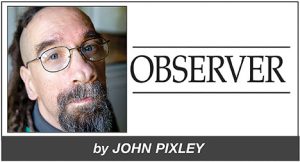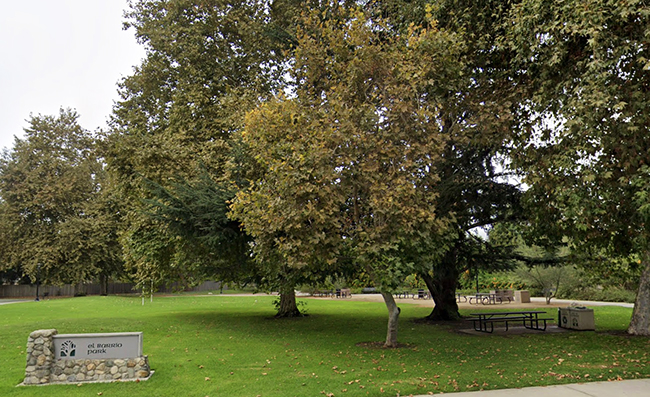Not all bad, not bad at all, on the Fourth
by John Pixley
It was a new day.
I wasn’t sure if it would be a good one. At least not at first.
When I first read a few months ago that the Fourth of July parade would be at 10 in the morning, I felt something at a loss. It was bad enough, weird enough, that the parade was canceled for the last two years due to COVID. I knew it wasn’t a mistake, but I all but wished it was a mistake, or that I wasn’t reading it, that this wasn’t really happening.
The parade down Indian Hill, pass Memorial Park and over Harrison to Larkin Park, was always at 4 in the afternoon. It had always been at 4. For as long as I could remember. Since I was a child growing up in Claremont. How could it now, suddenly, be at 10? In the morning?
It didn’t make sense. And this was one of a few major changes to Claremont’s famed Independence Day celebration — the run scheduled for another morning, the festival in Memorial Park ending a 2 instead of 4 — announced in that small notice. But, for me, it was the biggest. (This was before it was announced the fireworks were canceled due to water concerns and that there’d be a special concert by the Ravelers in Memorial Park — a consolation prize of sorts — instead.)
Later, in another notice in these pages about the July 4 schedule, there was mention of accommodations made for city staff. So at least some of these changes were made so that staff wouldn’t have to work so much on the holiday. This was, it seems, another, yet another, change coming out of COVID, including employees being more selective about what they will and will not do. As one who employs people to assist me, I can attest to this.
What would all this change be like? What would it be like having the parade at 10, in the morning light, instead of at the end of the afternoon, when the bright light of a bright summer day was beginning to languish? What would it be like to have this longtime tradition so altered?
I set off at 9:30 that morning with a “let’s-do-this” frame of mind, wanting to be more open to whatever was coming, a kind of exciting adventure, rather than having a grim determination facing a forced, if not unwanted, change.
I was headed for Mallows Park, right where the parade turns onto Harrison Avenue from Indian Hill. I discovered this to be a pleasant spot a few years ago after watching from across the street at Memorial Park for literally decades. As I was about to again discover, sometimes change is good, perhaps for the better.
As I got closer, there were the usual fellow parade watchers coming along, a few with chairs and blankets. I also noticed some carrying handmade signs, and heard yelling or, yes, chanting coming from the park. I couldn’t quite see the signs or hear the chants, but it was quickly clear the parade wasn’t all that was up this morning. I just didn’t know what it was and, as with everything else, how it would work, what it would be like.
Before I went up into the park, I looked and wasn’t surprised there were signs of pro-choice protest regarding the recent Supreme Court ruling overturning the 1973 Roe v. Wade decision.
I found a nice spot overlooking the parade route with my back to the gently warming morning sun and close to the rallying protesters. It was striking to me that there were a few men involved and most of the protesters were young, some quite young. The future is in good, caring hands, I thought.
I was wondering how the protest would go along with the parade, but I sensed it was nothing to worry about. I wasn’t alarmed. I was also comfortable with a person across the street having a sign protesting the Court’s recent decision relaxing gun control.
After all, I figured, those in the parade — or a number of them — like the Pilgrim Place residents with their signs advocating peace and justice or the children riding their decorated bikes and scooters, were expressing certain views or just expressing themselves. These folks were just joining in.
Then the parade started down the street in the fresh, new day sun.
The parade at this new time, greeting the morning, kicking off the day, along with the bright-eyed protesters and the heartfelt, personalized signs, suddenly made beautiful, exquisite sense.
Morning had broken, indeed. Like the first morning.
As the marching bands, roaming musicians and music-makers passed by the impassioned chanting protesters (“My body! My choice!”), as the sequined drill teams and festooned cars and trucks, bicycles and strollers passed the colorful, bobbing signs, it was a lovely thing to behold.
It was a new day in these days of disturbing polarization and ugly, all-too-often violent confrontations. Unlike the destructive, sometimes deadly uprisings and insurrections we have seen in recent years, this was all a hearty, jubilant, if not joyful noise, a peaceable, civil, if not exactly civilized, cacophony.
When the parade had passed, I made my way toward the protesters, who were also departing, having made their expressions, their proclamations heard and seen. I noticed a few of the signs were a bit shocking, featuring profanity that may be considered inappropriate in the setting. I imagined if the group was from a church, as I suspected, the pastor wouldn’t have been amused, and some passersby would have been offended. Perhaps a few would have been turned off to the cause.
Then again, I thought, they were just words and few among many. Sticks and stones … No one got really hurt. No one was maimed or even killed, as has happened too many times in recent years, including, tragically, as I learned a few hours later, at another small-town parade that morning.
Yes, the day overall and even the parade may have been somewhat subdued, especially with the surprisingly small crowd at the Ravelers concert in the evening. It may be best to eventually return to the usual Claremont Fourth of July lineup. But on that morning, on that corner, I saw a new beginning, another start, with us gathering, safely and in peace, expressing ourselves despite our differences. A beautiful, civil mess, indeed.









0 Comments